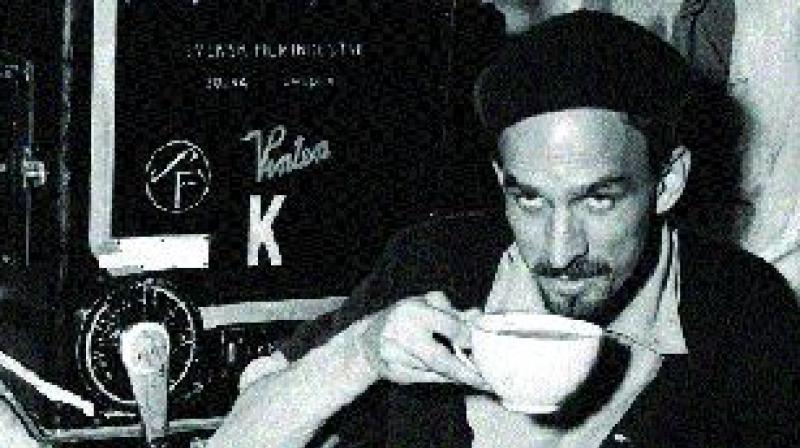Bergman's sanctuary island Faro is a site of pilgrimage for fans
Until 1998, Faro was off-limits to foreigners as a protected military zone.

Bergman was already a an acclaimed film director when he explored Faro island for the first time in 1960, while trying to find a location for “Through a Glass Darkly”.“It was love at first sight,” Bergman wrote on exploring Faro island, which lies just off the northern tip of Gotland, and stretches 110 sq km (around 42 square miles).
Endless winters, sparse pine trees rising from infertile soil, few sheep and even fewer people: the Baltic island of Faro is not only a natural film set for Ingmar Bergman, but his sanctuary and final resting place.
The Swedish filmmaker, who would have turned 100 on July 14, died on July 30, 2007.
Here on this stony island, where fishermen and peasants settled centuries ago, Bergman is buried next to his wife Ingrid von Rosen at a site which has turned into a place of pilgrimage for his admirers.
The director was already an internationally-acclaimed star when he explored Faro for the first time in 1960 while trying to find a location for “Through a Glass Darkly”.
There he discovered the island’s pebble beaches, distinctive rock formations, bogs and meagre pastures, its ports, church and lighthouse.
“It was love at first sight,” he wrote on exploring Faro which lies just off the northern tip of Gotland, Sweden’s largest island, and stretches 110 square kilometres (around 42 square miles).
Until 1998, Faro was off-limits to foreigners as a protected military zone.
“This is your landscape, Bergman. It corresponds to your innermost imaginings of forms, proportions, colours, horizons, sounds, silences, lights and reflections,” he wrote in his autobiography, “The Magic Lantern”.
After “Through a Glass Darkly”, which won an Oscar in the best foreign language film category, Bergman filmed “Persona” (1966), “Shame” (1968), “The Passion of Anna” (1969) and “Scenes from a Marriage” (1973) on Faro.
He also made two documentaries, paying tribute to the workers he employed at his estate, who would also set up dolly rails for tracking shots and play extras. Some remember well the napalm fires set up to represent the horrors of war in “The Passion of Anna”.
According to one piece of local lore, Bergman paid well, so well in fact that when visitors asked where his house was, loyal islanders would usually point in the opposite direction.
‘Moliere and the Golden Helmet’
When Bergman discovered the beach at Hammars in 1966 while filming “Persona”, he decided to build a one-storey house in the area.
He spent several years there with the Norwegian actress Liv Ullmann, who later spoke of her memories of enduring dark winters while Bergman isolated himself.
The artist also bought a barn and a stable which he turned into a private cinema.
There he trucked in reels of films from Stockholm, including several of his favourite works -- among them “Moliere” (1978) by French director Ariane Mnouchkine and Jacques Becker’s “Golden Helmet” (1952) as well as a string of classics by Charlie Chaplin and Buster Keaton.
Several years after Bergman’s fifth and last wife Ingrid passed away in 1995, he sold his apartment in Stockholm, moving permanently to Faro in 2003.
D15
